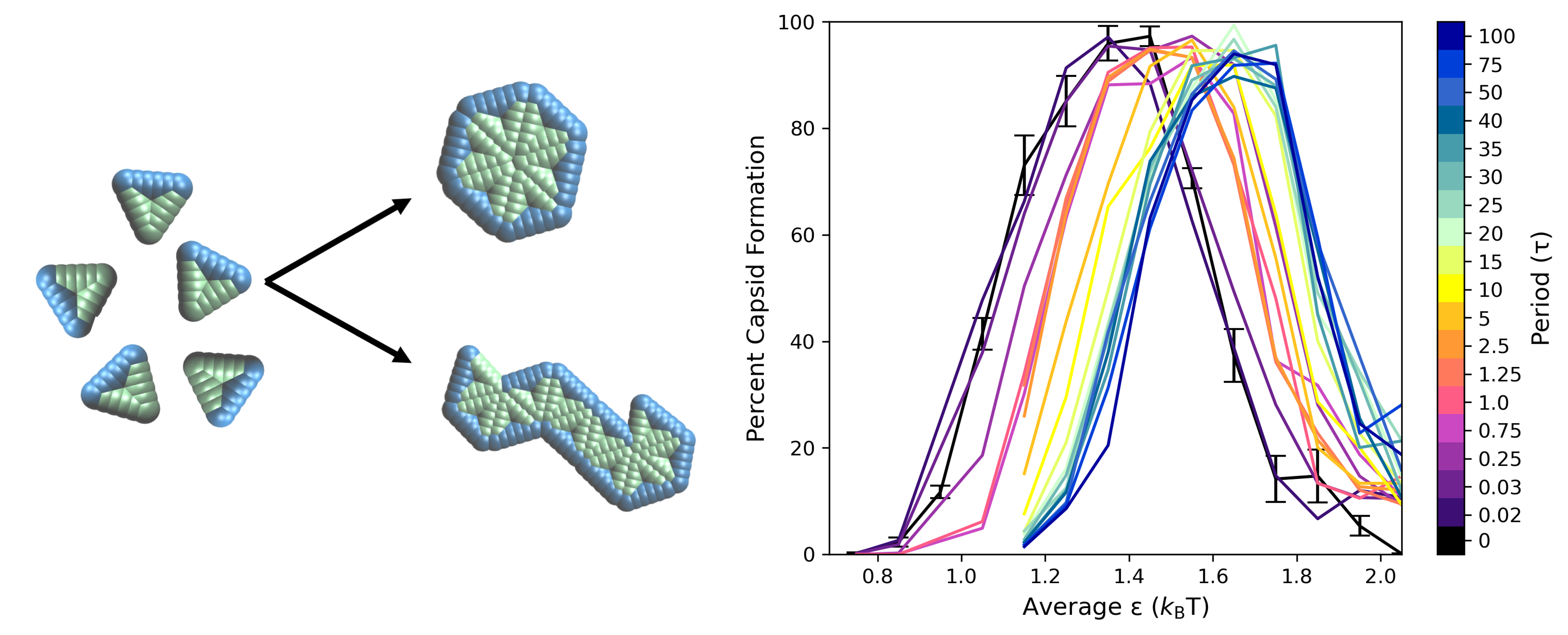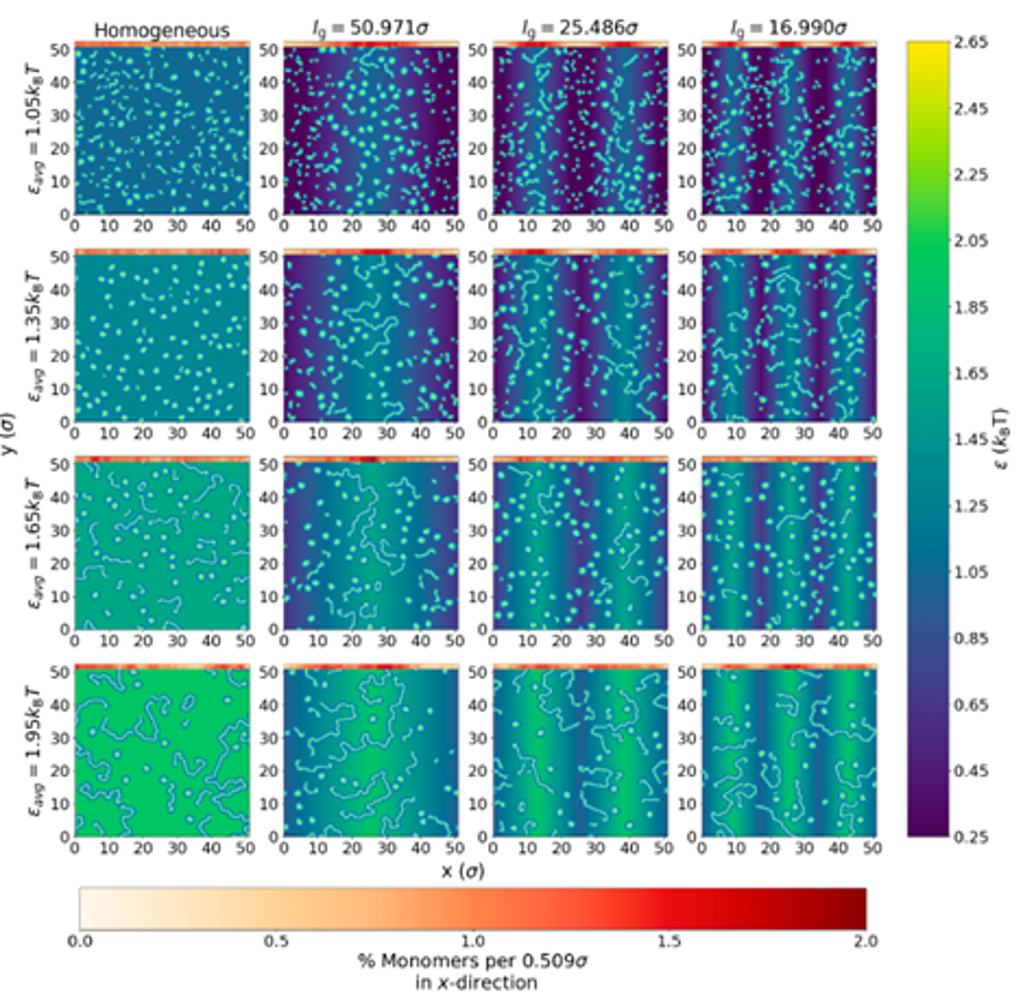Assembly Under Temporal and Spatial Oscillations

Many essential cellular processes depend on the ability of biostructures to self-organize, rearrange, and fall apart at precise locations in space and time. The environment within which they do so is exceedingly complex – the numerous molecules that mediate interactions between self-organizing components have concentrations that vary from one location to another, while also changing in time. Interestingly, previous studies have shown that oscillatory interactions can facilitate the rapid equilibration of self-assembling colloidal particles or result in novel non-equilibrium steady-state structures. We are furthering our understanding of these effects by using a viral capsid-like model to explore additional complexities, including a self-limiting structure (the full capsid), multiple diffusional timescales, and a non-classical two-step assembly pathway. Our results emphasize the key role played by error correction when interactions are at their weakest. Under spatially-variant interactions, we find the expected spatially-localized assemblies and, unexpectedly, altered overall yields. Expanding our studies to a different model system, we are also investigating how pH oscillations influence the structure of charged colloidomers. Finally, we have mapped out which oscillating inter-particle forces have the potential to form novel structures at the fast oscillation limit, which will provide practical guidance for experimental groups seeking to make new materials. Manuscripts in preparation.
 Figure 2: Visualization of the System with Homogenous and Spatially Variant Interactions. Spatially dependent attraction strengths, shown by a color gradient according to the right-hand color bar, influence where specific structures assemble. The homogeneous system (Column 1) results in assembly broadly occurring throughout the simulation box, with structures changing from small aggregates to capsids to long snake-like aggregates as attractions become stronger (more green in coloring). If attractions depend on position (Columns 2-4), when εavg is weak, the regions of strong attraction strength (light blue) form capsids and small aggregates and regions of weak attraction strength (deep violet) remain as monomers. As εavg increases, regions of strong attraction strength become so strong that long snake-like aggregates assemble (green) and the weaker regions are strong enough to promote capsid formation (blue). Decreasing the spatial extent of the gradient, lg, further controls where different structures assemble. Above each snapshot is a bar indicting the average percent of monomers within the system, suggesting more monomers are localized near regions of strong attraction strength.
Figure 2: Visualization of the System with Homogenous and Spatially Variant Interactions. Spatially dependent attraction strengths, shown by a color gradient according to the right-hand color bar, influence where specific structures assemble. The homogeneous system (Column 1) results in assembly broadly occurring throughout the simulation box, with structures changing from small aggregates to capsids to long snake-like aggregates as attractions become stronger (more green in coloring). If attractions depend on position (Columns 2-4), when εavg is weak, the regions of strong attraction strength (light blue) form capsids and small aggregates and regions of weak attraction strength (deep violet) remain as monomers. As εavg increases, regions of strong attraction strength become so strong that long snake-like aggregates assemble (green) and the weaker regions are strong enough to promote capsid formation (blue). Decreasing the spatial extent of the gradient, lg, further controls where different structures assemble. Above each snapshot is a bar indicting the average percent of monomers within the system, suggesting more monomers are localized near regions of strong attraction strength.